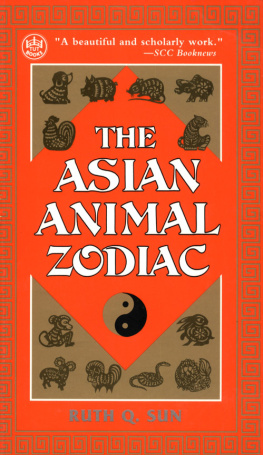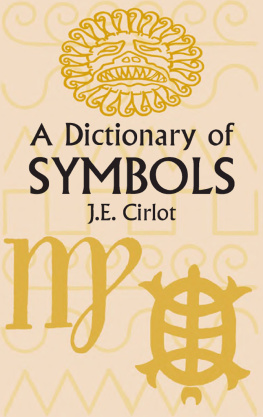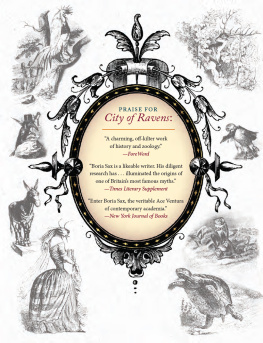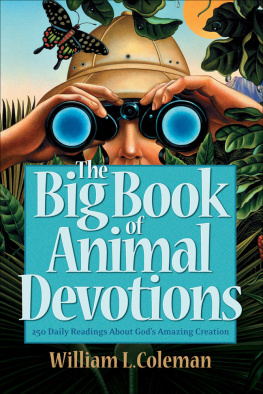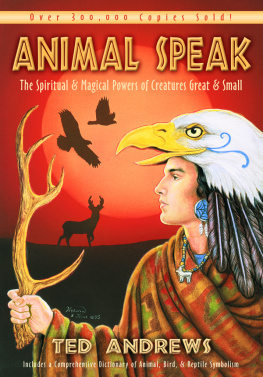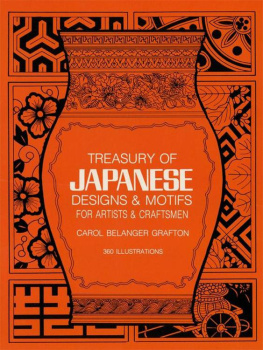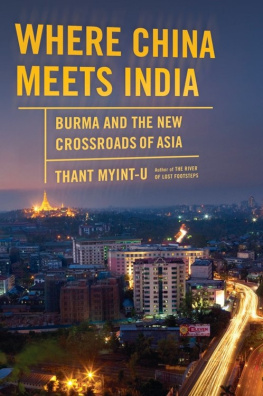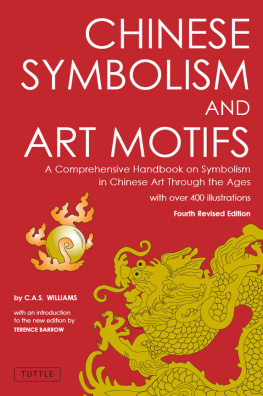ANIMAL MOTIFS IN ASIAN ART
An Illustrated Guide to Their Meanings and Aesthetics
ANIMAL MOTIFS IN ASIAN ART
An Illustrated Guide to Their Meanings and Aesthetics
KATHERINE M. BALL

DOVER PUBLICATIONS, INC.
Mineola, New York
Bibliographical Note
This Dover edition, first published in 2004, is an unabridged republication of the work originally published in 1927 by John Lane The Bodley Head Ltd. (London) and Dodd, Mead and Company (New York) under the title Decorative Motives of Oriental Art.
Library of Congress Cataloging-in-Publication Data
Ball, Katherine M. 1859
[Decorative motives of oriental art]
Animal motifs in Asian art: an illustrated guide to their meanings and aesthetics / Katherine M. Ball,
p. cm.
Originally published: Decorative motives of oriental art. London: John Lane; New York: Dodd Mead, 1927.
Includes index.
eISBN 978-0-486-14730-7
1. Art, AsianThemes, motives. 2. Animals in art. 3. Decoration and ornamentAsia. I. Title.
N7260.B3 2004
704.9432095dc22
2004043930
Manufactured in the United States of America
Dover Publications, Inc., 31 East 2nd Street, Mineola, N.Y. 11501
TO
THE MEMBERS OF SAKURA KWAI
WHO
FOR FIFTEEN YEARS
HAVE SYMPATHETICALLY JOINED ME
IN THE PURSUIT OF AN UNDERSTANDING OF ORIENTAL
PHILOSOPHY, FOLKLORE
AND ART
PREFACE
T HIS volume is intended to meet a need greatly felt for an interpretation of the motives that so delightfully enrich the artistry of the Orient.
The wide distribution, over the Occident, of these wares, particularly those of China and Japan, has not only led to an appreciation of their great beauty, but has stimulated a desire to know the special meaning of the patterns which decorate them. For interest deepens with the realization that every convention or device thus usedwhether derived from the human, animal, plant, or mineral kingdom, and even from the realm of geometryhas significance. And while this may be manifestly obvious or perceptibly equivocal, sometimes poetic or humorous, or again profound and pedantic, involving a religious and mystic import, it ever becomes a source of absorbing interest. The figures of deities and heroes in combination with beasts, birds, fishes, reptiles, and even insects; or any of these in combination with trees, plants, flowers, rocks, water, clouds, or the manifestation of wind, point to alluring legends, while interesting abstractions, forms of pure invention, suggest recondite allusions. Thus the treasured possessions of cultured homes as well as those of museum collections become doubly valued.
In the Orient, art has always been regarded as an important means to an end rather than an end itself. It was used as a medium through which were taught essential lessons of the philosophies of life, in which function it became the auxiliary of ethics and religion.
A noted example of this reciprocal service by which moral instruction has been for centuries most subtly imparted, is given in the subject of The Carp Leaping the Waterfall. For, wherever it is represented, whether modelled, carved, painted, printed, embroidered, or woven, it tells the story of the fish attaining the coveted state of dragonhood through its courage, patience, and perseverance in performing the extraordinary feat of surmounting this formidable obstruction. Hence, indirectly but most effectively, this design never fails to instil the idea that he who would make a success of life must emulate the qualities of this creature.
The decorative motives that so constantly confront the student of oriental art seem countless. Yet notwithstanding their number, he soon learns, even from meagre experience, that every one has a special meaning. To ascertain this, however, is a most difficult and laborious task, on account of there being so few books that present this subject in a comprehensive manner. Among those which have proven helpful are The Descriptive and Historical Catalogue of the Collection of Japanese and Chinese Paintings in the British Museum, by William Anderson; Murrays Handbook for Travellers in Japan, by Basil Hall Chamberlain and William B. Mason; Legends in Japanese Art, by Henri L. Joly; Japanese Art Motives, by Maud Rex Allen; The Gods of India, by E. Osborne Martin; and The Gods of Northern Buddhism, by Alice Getty. Other museum and travel guides, as well as Sothebys sales catalogues and many publications pertaining to the arts and religions of Asia, and books on archology and ethnology offer desirable information. This is apt, however, to be fragmentary and scattered, so that there still may be found in the graphic arts many motives which, remaining unexplained by writers, call for independent research.
Therefore, while the text of the following includes gleanings from many authors, it also contains much matter thatas far as is knownnever before has been published. This has been derived from books, paintings, and the inscriptions on coloured prints of both China and Japan, translated and interpreted by erudite members of our local oriental colony. So interested in this quest were these friends that they always related much more than was written, contributing the traditions of mythology, folk-lore, and history which had been taught them in childhood by their elders.
The contents of this book consist of a revised reprint of a series of articles that appeared in Japan, a magazine published in San Francisco by the Toyo Kisen Kaisha Steamship Co.
The original idea was to narrate, mainly, legends, and interpret symbols pertaining to the particular culture that sprang from China and spread through adjacent countries and thence through Korea and Japan. However, the tracing of the origin of many motives led to the investigation of the art, not only of the Hindus, Persians, Egyptians, and Grecians, but of the ancient Americansthe Incas, Mayas, Toltecs, and the Aztecscausing the inclusion of both matter and illustration pertaining to these peoples; but at no time has there been any thought of treating this part of the subject, in any sense, exhaustively.
It was also intended to make these articles appear in as beautiful a form as the arts of design and typography could devise. Hence, the opposite pages of the magazine were composed to form a single organism in which the illustrations were inserted into the text so that those in corresponding places would balance each other in size, proportion, and values, as well as express the same ideas of contenta setting which, in the revision, has been retained.
While the labour entailed, in collecting the material herein submitted, and bringing it to its present consummation, has, for a number of years, taken every spare minute of a scant leisure, it has been interesting and pleasurable. From the very beginning the most helpful assistance has been received from many sources. The San Francisco Public Library extended special privileges. Dr. John Fryer and Prof. S. C. Kiang of the Oriental Department of the University of California most kindly supplied excerpts from the Chinese Encyclopdia. Two well-known Japanese artists, Chiura and Kakunen, and the noted Mexican designer, Mr. Francisco Cornejo, not only contributed illustrations but legends and symbols as well. Mr. Will H. Edmunds, the eminent London authority, not only proffered needed corrections of the original text, as well as of the copy before going to press, but most generously made the index.
I was likewise fortunate in having for a secretary, Miss Ruth Wetmore, whose interest in things oriental impelled her to bring an exceptional devotion to the work.
Next page

